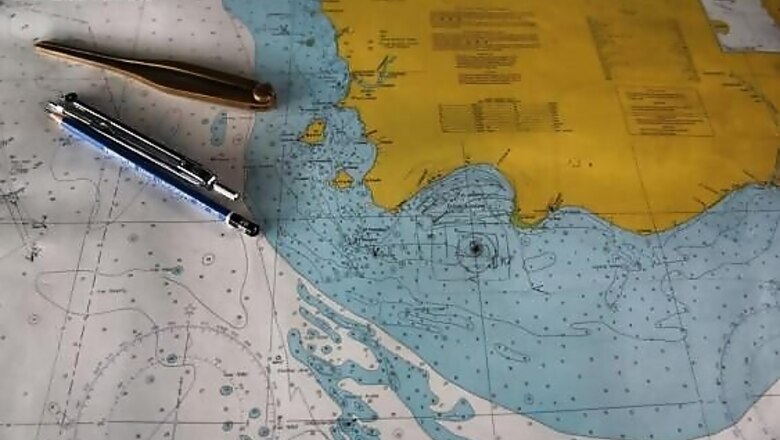
views
Indonesia:: A specialist multinational team armed with acoustic equipment will arrive at the suspected crash site of a sunken AirAsia jet off Borneo on Friday, bolstering the search for the plane's black box flight recorders.
Bad weather has hampered the search, keeping divers from looking for the wreck of the Airbus A320-200, which was carrying 162 people when it crashed on Sunday en route from the Indonesian city of Surabaya to Singapore.
France's BEA crash investigation agency said late on Thursday a ship with two hydrophones, or underwater acoustic detection devices, was due to arrive at the scene early on Friday with French, Singaporean and Indonesian experts aboard.
The Indonesian-led search for the wreck of Flight QZ8501 is centred in the northern Java Sea, close to the Karimata Strait, where search teams have recovered bodies and pieces of the plane. Previous reports of a sonar image showing the plane body in the water have not been confirmed, officials said.
Officials earlier said it may take up to a week to find the black boxes, which investigators hope will reveal the sequence of events in the cockpit and in the heavily computerised jet's systems. The BEA team attends the crashes of all Airbus planes.
Even in bad weather, the search for the AirAsia jet is unlikely to be as technologically challenging as the two-year search for an Air France jet that crashed into deep Atlantic waters in 2009 or the so far fruitless search for Malaysian Flight 370 which disappeared last year.
Given Flight QZ8501 crashed in shallow seas, experts say finding the boxes should not be difficult if the beacons, with a range of 2,000 to 3,000 metres (6,560 to 9,800 ft), are working.
Tatang Kurniadim, the head of Indonesia's National Committee for Transportation Safety, said late on Thursday that rescuers would use five ping locators two from Indonesia, two from Singapore and one from Britain - once bad weather had eased and the waters had calmed as expected within five days.
Investigators are working on a theory that the plane stalled as it climbed steeply to avoid a storm about 40 minutes into the flight.
So far, at least seven bodies have been recovered from waters near the suspected crash site, along with debris such as a suitcase, an emergency slide and a life jacket.
The bodies are being taken in numbered coffins to Surabaya, where relatives of the victims have gathered, for identification. Authorities have been collecting DNA from relatives to help identify the bodies.
Most of those on board were Indonesians. No survivors have been found.
Relatives, many of whom collapsed in grief when they saw the first television pictures of the plane debris on Tuesday, held prayers at a crisis centre at Surabaya airport.
"Unbelievably" steep climb
The plane was travelling at 32,000 feet (9,753 metres) and had asked to fly at 38,000 feet to avoid bad weather. When air traffic controllers granted permission for a rise to 34,000 feet a few minutes later, they received no response.
A source close to the probe into what happened said radar data appeared to show that the aircraft made an "unbelievably" steep climb before it crashed, possibly pushing it beyond the Airbus A320's limits.
"It appears to be beyond the performance envelope of the aircraft," he said.
The source, who declined to be identified, added that more information was needed to come to a firm conclusion.
Online discussion among pilots has centred on unconfirmed secondary radar data from Malaysia that suggested the aircraft was climbing at a speed of 353 knots, about 100 knots too slow, and that it might have stalled.
The Indonesian captain, a former air force fighter pilot, had 6,100 flying hours on the A320 under his belt and the plane last underwent maintenance in mid-November, according to Indonesia AirAsia, which is 49 percent owned by Malaysia-based budget carrier AirAsia.
Three airline disasters involving Malaysian-affiliated carriers in less than a year have dented confidence in the country's aviation industry and spooked travellers.
Malaysia Airlines Flight MH370 disappeared in March en route from Kuala Lumpur to Beijing with 239 passengers and crew and has not been found. On July 17, the same airline's Flight MH17 was shot down over Ukraine, killing all 298 people on board.
On board Flight QZ8501 were 155 Indonesians, three South Koreans, and one person each from Singapore, Malaysia and Britain. The co-pilot was French.
The AirAsia group, including affiliates in Thailand, the Philippines and India, had not suffered a crash since its Malaysian budget operations began in 2002.




















Comments
0 comment